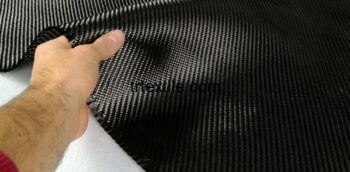-
200g carbon fiber fabric
$55,00Original price was: $55,00.$50,00Current price is: $50,00. -
245g carbon fiber fabric
$55,00Original price was: $55,00.$50,00Current price is: $50,00. -
420g carbon fiber fabric
$55,00Original price was: $55,00.$50,00Current price is: $50,00. -
600g carbon fiber fabric
$55,00Original price was: $55,00.$50,00Current price is: $50,00. -
95g carbon fiber fabric
$55,00Original price was: $55,00.$50,00Current price is: $50,00.
Carbon fiber fabrics have become increasingly popular in recent years due to their lightweight yet incredibly strong properties. These fabrics are made from carbon fibers, which are extremely thin strands of carbon atoms bonded together in a crystal lattice structure. The resulting material is known for its high tensile strength, low weight, and resistance to corrosion and heat. Carbon fiber fabrics are used in a wide range of applications, from aerospace and automotive industries to sports equipment and consumer goods.
One of the key advantages of carbon fiber fabrics is their high strength-to-weight ratio. Carbon fibers are about five times stronger than steel and about two times stiffer, yet they are significantly lighter. This makes carbon fiber fabrics ideal for applications where strength and stiffness are critical but weight needs to be minimized. For example, carbon fiber composite materials are commonly used in aircraft components, such as wings and fuselages, to reduce weight and improve fuel efficiency.
Another benefit of carbon fiber fabrics is their resistance to corrosion and heat. Unlike metals, carbon fibers do not rust or corrode, making them ideal for outdoor and marine applications. Additionally, carbon fiber fabrics can withstand high temperatures without losing their structural integrity, making them suitable for use in high-temperature environments, such as in the aerospace and automotive industries.
In addition to their strength and heat resistance, carbon fiber fabrics are also highly versatile. They can be easily molded into complex shapes and integrated with other materials, such as resins, to create composite materials with specific properties. This flexibility allows manufacturers to tailor the characteristics of carbon fiber fabrics to meet the requirements of different applications. For example, carbon fiber composites can be designed to be highly flexible for use in sporting goods, or extremely rigid for use in structural components.
Despite their many advantages, carbon fiber fabrics do have some limitations. One of the main drawbacks is their high cost compared to traditional materials, such as steel or aluminum. The production process for carbon fiber fabrics is complex and energy-intensive, which contributes to their high price. However, as technology advances and demand for carbon fiber fabrics increases, the cost is expected to decrease over time.
Another challenge with carbon fiber fabrics is their susceptibility to impact damage. While carbon fibers are incredibly strong under tensile loads, they can be prone to delamination and cracking when subjected to impact forces. This can limit the durability of carbon fiber components and increase maintenance requirements. To address this issue, manufacturers are developing new techniques and materials to improve the impact resistance of carbon fiber fabrics.
In conclusion, carbon fiber fabrics offer a unique combination of strength, lightweight, and versatility that make them ideal for a wide range of applications. From aerospace and automotive industries to sports equipment and consumer goods, carbon fiber fabrics are revolutionizing the way products are designed and manufactured. While there are some challenges to overcome, the benefits of carbon fiber fabrics far outweigh the drawbacks, making them a valuable material for the future.




